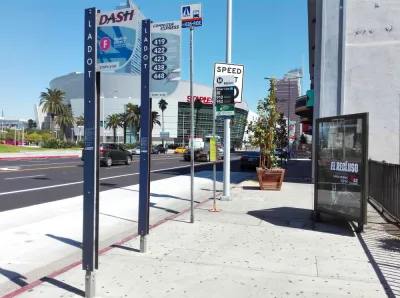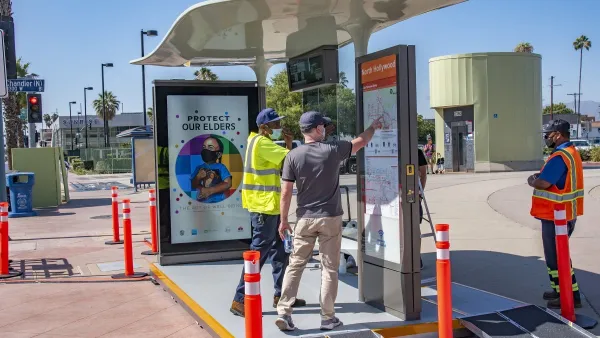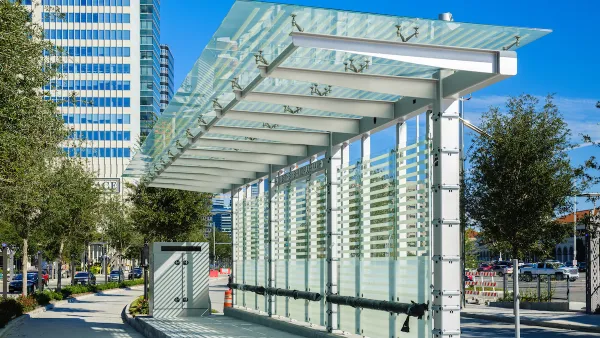Bus riders in Los Angeles frequently lack protection from sun and extreme heat, with bus stops in some of the county’s hottest areas having the worst amenities.

If you’ve taken a bus in Los Angeles, chances are you’ve noticed a few desolate bus stops that lack shelters, seating, or nearby trees to offer protection from extreme heat, rain, or wind. Dan Zukowski describes the situation in Smart Cities Dive, referencing a new study from the University of California, Los Angeles, Lewis Center for Regional Policy Studies that reveals that only 26 percent of Los Angeles County bus stops have shelters.
The problem isn’t unique to the City of Angels: “According to data compiled by the Washington Post last year, less than 20% of more than 122,000 bus stops in use by 16 large U.S. transit agencies have bus shelters.”
As Zukowski explains, “Typically, local jurisdictions, not transit agencies, are responsible for installing and maintaining bus shelters, according to the report. That means that some cities will have substantially higher numbers of shelters while others will have relatively few.” The Lewis Center study noted that in Los Angeles County, “neighborhoods with high Latino populations average temperatures that are four degrees warmer than those with low Latino populations and that ‘extreme heat days are warmer in neighborhoods with more Black residents than those with fewer Black residents.’”
As extreme heat becomes more common, the study’s authors write, “government partners will need to prioritize where new shelters are installed and consider how to maximize their benefits.”
FULL STORY: Most Los Angeles County bus stops lack protection from extreme heat

National Parks Layoffs Will Cause Communities to Lose Billions
Thousands of essential park workers were laid off this week, just before the busy spring break season.

Retro-silient?: America’s First “Eco-burb,” The Woodlands Turns 50
A master-planned community north of Houston offers lessons on green infrastructure and resilient design, but falls short of its founder’s lofty affordability and walkability goals.

Delivering for America Plan Will Downgrade Mail Service in at Least 49.5 Percent of Zip Codes
Republican and Democrat lawmakers criticize the plan for its disproportionate negative impact on rural communities.

Test News Post 1
This is a summary

Test News Headline 46
Test for the image on the front page.

Balancing Bombs and Butterflies: How the National Guard Protects a Rare Species
The National Guard at Fort Indiantown Gap uses GIS technology and land management strategies to balance military training with conservation efforts, ensuring the survival of the rare eastern regal fritillary butterfly.
Urban Design for Planners 1: Software Tools
This six-course series explores essential urban design concepts using open source software and equips planners with the tools they need to participate fully in the urban design process.
Planning for Universal Design
Learn the tools for implementing Universal Design in planning regulations.
EMC Planning Group, Inc.
Planetizen
Planetizen
Mpact (formerly Rail~Volution)
Great Falls Development Authority, Inc.
HUDs Office of Policy Development and Research
NYU Wagner Graduate School of Public Service





























